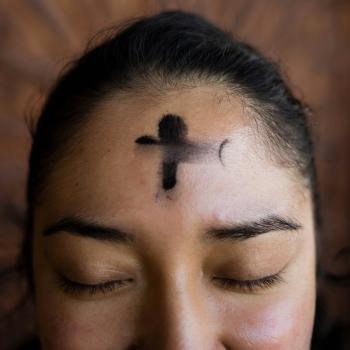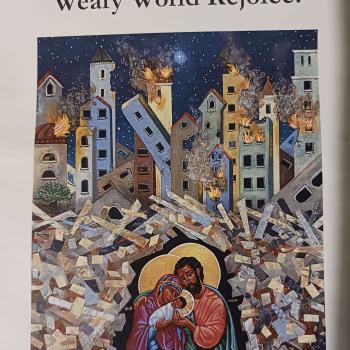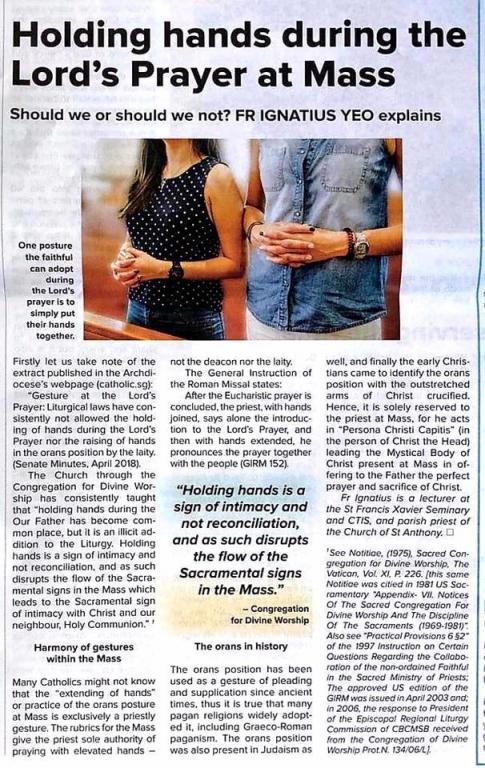As the late, great Dietrich von Hildebrand, one of my favorite Catholic thinkers of all time, reminds us in his Liturgy and Personality, the Liturgy is not some private devotion that Catholics hold in common but is rather the transformative formal prayer of the Church that illumines and enhances true personhood, which in turn transforms society. The Liturgy, precisely because of the center of its activity, the Eucharist, is the source of emanating grace in the world. Thus, the Liturgy, without being conceptually reduced to a mere social phenomenon, possess profound implication for the culture in which it is prayed.
For all the criticism that is levelled against the Second Vatican Council’s liturgical reform of the Roman Rite within the Catholic blogosphere, there is little praise to balance out the picture. Without focusing on how particular parishes have or have not implemented these reforms accurately or on the proliferating abuses that inevitably follow an ecumenical council of such a grand scope as that of Vatican II (think of how it took almost 200 years to implement the reforms of the Council of Trent), I’d like to point to a few reforms that have made our Liturgy richer and more in conformity with the early Christians forms of worship.
1. Vatican II’s reforms aimed at the Roman Rite. You would be amazed at how few self-appointed liturgical police offficers have read Sacrosanctum Concilium, the great liturgical document from the Second Vatican Council. It’s important to realize that Vatican II did not change the entire liturgical life of the Church. It reformed one particular rite of the Catholic Church, the Roman Rite. Very often critics of Vatican II fabricate an historical image of the “pre-Vatican II” Church as one uniform body with a homogeneous Liturgy. This is simply not accurate. While the the so-called Tridentine Mass (I don’t call it the “Latin Mass” since the Novus Ordo Mass can be, and has been, said entirely in Latin) was the official Liturgy of the Roman Rite, there were and still are a number of Eastern rite Liturgies. It’s easy for so-called “traditionalist” Catholics to forget that Eastern Catholicism has a long and celebrated history of tradition of the vernacular with a plurality of eucharistic prayers.
2. Vatican II drew from ancient liturgies and from the Eastern rites for its reforms.
Vatican II helped the Roman Rite to recover many traditions that were lost during the Carolingian era of the Western Church. Looking to ancient liturgical texts as well as to current practices in the Eastern rites, which helped preserve some of the most ancient traditions of the Church, the Roman Rite incorporated a number of important practices, not restricted to:
- the celebration of the Liturgy in the vernacular, which unites congretation and priest allowing for fuller participation by all Catholics in the Liturgy
- communion under both species
- reception of the Eucharist standing, which symbolizes the hope of Resurrection
- concelebration of the Eucharist
- conducting the Sacrament of Penance face-to-face
- more active participation of the laity such as the proclamation of the Word of God
These reforms and others capture ways in which the earliest Christians worshipped and expressed liturgical life.
Historically, there have been several different rites within the Catholic Church, each using its own language and cultural traditions. The oldest rites include the Assyro-Chaldean Rite, which retained many elements of Semitic rituals and remains the oldest known liturgical form, the Maronite Rite, which was derived from the Assyro-Chaldean Rite and is increasingly dominated by Arabic, and the Byzantine Rite, which traces itself at least to the 4th and 5th centuries (the Maronites claim to trace their rite to that of the apostles in Antioch and the Byzantines trace their liturgies to the Greek churches of St. Paul and to Constantinople and Asia Minor under the influence of St. John Chrysostom and St. Basil the Great).
The Christians of Rome did not switch from Greek to Latin on a broad scale in the Liturgy until after the middle of the 4th century. But there was no univocal liturgy in the West for quite some time. From the fourth century until at least the eighth century, there was a great deal of regional diversity in the West. While most Western liturgies were in Latin by the fifth century, there was no unified Latin liturgy as both St. Augustine and Pope St. Gregory the Great inform us. The West did not detect a need for a single, unifying Latin liturgy until the ninth century when Charlemagne commissioned Alcuin to establish a single liturgical rite for the Holy Roman Empire. But even still, there was debate over whether the Leonine Sacramentary or the Gregorian Sacramentary should be used as a standard. This is to say nothing of the Ambrosian Rite and the Mozarabic Rite, both of which were continued to be used widely in the West even until the time of St. Charles Borromeo, and the Rite of Gaul, which was used widely in the West up until the eighth century.
So not only did the use of Latin in the Catholic Church’s liturgies come relatively late compared to the standardization of languages in the liturgies of the East, which were always conducted in the vernacular (e.g., Greek, Aramaic, Syrian, Arabic), but the establishment of a unifying Liturgy in the West took a very long time. The “Latin Mass”, more appropriately called the Tridentine Mass, cannot be definitively traced back beyond the 13th century in a concrete form that strongly resembles the Liturgy mandated in the West after the Council of Trent. Pope Innocent III’s (r. 1161-1216) Mass book had a similar liturgical rule to that of the Tridentine Mass and it is the oldest full liturgy we have that closely resembles the Tridentine Mass.
The single biggest fiction in liturgical history is that the Catholic Church ever had a unified liturgy. The second biggest fiction–one that is perpetuated by the likes of Angelus Press–is the notion that the Roman Church mandated and successfully implemented one single liturgical rite for the entire Western Church before the Council of Trent in the 16th century. It is true, attempts were made by the likes of Pope St. Leo I, Charlemagne and Pope St. Gregory VII, but these reforms were not definitively achieved. Thus, the Novus Ordo in its diversity and use of the vernecular is actually more in keeping with the most ancient forms of liturgy which drew from the vernacular languages and engaged the lay faithful. The words of institution (“This is my Body…This is the cup of my Blood…”) have always been the same throughout history. But the liturgies themselves were abounding in difference depending on the region and language of the common people.
3. The 1970 Roman Missal (originally announced in 1969) included three added eurcharistic prayers providing a total of four different prayers within the Roman Rite:
a. Prayer I: The “Roman Canon” or “First Eucharistic Prayer”, which is derived from the Tridentine Missal
b. Prayer II: A prayer adapted from St. Hippolytus‘ third century Apostolic Tradition
c. Prayer III: A modern prayerd.
d. Prayer IV: A prayer adapted from the “anaphora” of St. Basil the Great
These prayers express the true tradition of the Church, representing its liturgical life from antiquity (Prayer II and IV), through the Middle Ages (Prayer I) and into the present day (Prayer III).
4. The revised lectionary has enriched the Liturgy of the Roman Rite.
The congregation now hears readings from the entire Bible. The Tridentine Mass neglected altogether the Gospel of Mark, and certain passages from the Gospel of Matthew were read repeatedly in Latin (one example is the parable of wise and foolish virgins that was read at EVERY feast day for women saints). The revised lectionary exposes Catholics to virtually the entire Bible, saturating them with the Word of God.
—
I know, I know. It will be pointed how many abuses have abounded within the practice of the Novus Ordo Mass. I certainly will not deny that. But when he look at this liturgy in itself, in its true form, we find a beautifully crafted offering to God that, should it be prayed aptly and correctly, is far more in keeping with the liturgical traditions of the Catholic Church than many Roman Rite Catholics know. This is why I love going to Mass as a Roman Rite Catholic and why I do not spend my time in church distracted from the Divine Mystery unfolding before me while wistfully taking a silent inventory of all that’s “wrong” and “abused.”











